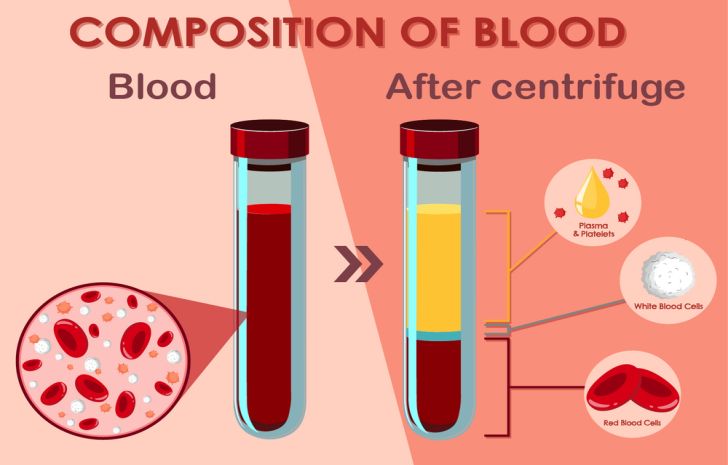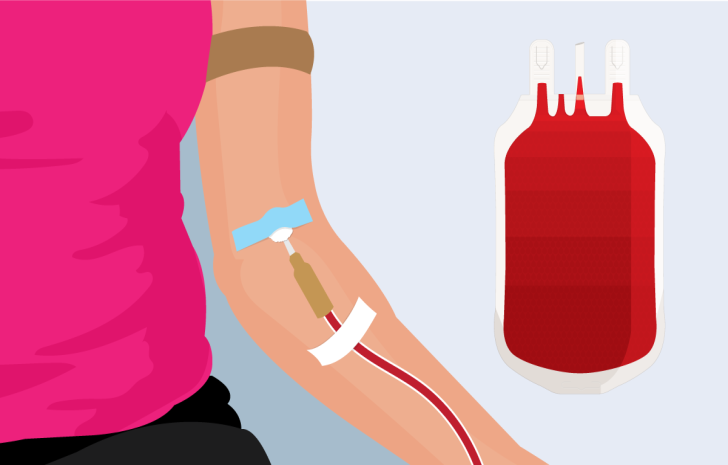
The Science Behind Blood Donation: How Your Gift Saves Lives
Blood donation is a remarkable act of kindness and altruism that has a profound impact on the lives of those in need. It's a process that extends far beyond the simple act of rolling up your sleeve and donating a unit of blood. The science behind blood donation is a fascinating field that underlines how a seemingly ordinary act can have extraordinary consequences. In this article, we'll delve into the science behind blood donation and explore how your gift of blood can save lives.
The Basic Components of Blood
Before we explore the science of blood donation, let's take a moment to understand the basic components of blood. Blood is composed of several crucial elements, including:
1. Red Blood Cells (RBCs): Red blood cells are responsible for carrying oxygen from the lungs to the rest of the body and returning carbon dioxide to the lungs for exhalation. They give blood its distinctive red color and are a vital part of the body's circulatory system.
2. Plasma: Plasma is the liquid component of blood and makes up about 55% of total blood volume. It contains water, electrolytes, hormones, and waste products. Plasma also plays a critical role in transporting nutrients, hormones, and proteins throughout the body.
3. White Blood Cells (WBCs): White blood cells are a crucial part of the body's immune system. They defend against infections, bacteria, and foreign invaders, helping to keep the body healthy and free from disease.
4. Platelets: Platelets are responsible for blood clotting. When you get a cut or injury, platelets help to form clots to stop bleeding and promote healing.

The Science Behind Blood Types
One of the most important aspects of blood donation is understanding blood types. Blood is classified into different groups based on the presence or absence of specific antigens on the surface of red blood cells. The two most well-known systems for classifying blood types are the ABO system and the Rh factor (positive or negative).
ABO System: Blood can be categorized as A, B, AB, or O based on the presence of A or B antigens. For example, someone with type A blood has A antigens on their red blood cells, while type B blood has B antigens. Type AB blood has both, and type O has neither A nor B antigens.
Rh Factor: The Rh factor refers to the presence or absence of the Rh antigen (also known as the Rhesus factor) on the surface of red blood cells. If this antigen is present, the blood type is considered Rh-positive (+), and if it is absent, the blood type is Rh-negative (-).
Understanding blood types is crucial because the wrong blood type transfusion can have severe consequences, including a potentially life-threatening reaction. Blood donation centers carefully match donated blood to the recipient's blood type to ensure compatibility.

The Importance of Blood Donation
Now, let's explore the science behind why blood donation is so critical. Every day, countless individuals require blood transfusions for various medical reasons, including surgery, trauma, cancer treatment, and more. Here's why blood donation is a lifeline for many:
1. Blood Loss and Trauma: In cases of accidents, injuries, or surgeries, significant blood loss can occur. Blood transfusions are necessary to replace the lost blood, ensuring oxygen is delivered to vital organs and tissues.
2. Cancer Treatment: Patients undergoing chemotherapy often experience a drop in their blood cell counts. Blood transfusions help maintain healthy blood levels during treatment.
3. Chronic Diseases: Individuals with chronic conditions like sickle cell anemia or thalassemia may require regular transfusions to manage their condition and improve their quality of life.
4. Emergency Situations: In emergency situations, such as during childbirth complications or severe infections, a timely supply of blood can be a matter of life and death. Join us Here for Blood Donation.
The Science of Saving Lives
When you donate blood, you're not just providing a bag of liquid; you're offering a lifeline. The science behind blood donation is all about matching blood types, processing the donated blood, and ensuring its safe transfusion to those in need. Here's a step-by-step overview of how the science works:
1. Donation: Blood donation centers collect blood from willing donors. The process is safe, and strict hygiene and screening measures are in place to protect both the donor and the recipient.
2. Testing: After donation, the blood goes through a series of tests to ensure it's free from infections and compatible with the intended recipient's blood type.
3. Processing: The donated blood is separated into its individual components, such as red blood cells, plasma, and platelets. This step allows healthcare providers to use the specific component required for a patient's condition.
4. Storage: Blood components are stored in specialized refrigerators until they are needed. Red blood cells typically have a shelf life of 42 days.
5. Transfusion: When a patient requires a blood transfusion, the matched component is prepared and carefully administered by trained medical staff. The process is closely monitored to prevent any adverse reactions.

The Impact of a Single Donation
It's easy to underestimate the impact of a single blood donation, but the science behind it reveals the far-reaching effects of your generous act. A single donation can potentially save multiple lives, thanks to the separation of blood components. Here's how your donation makes a difference:
1. Red Blood Cells: These are commonly used in surgeries, trauma cases, and for patients with anemia. One donation can provide red blood cells for multiple individuals.
2. Platelets: Platelet donations are critical for cancer patients and those with clotting disorders. Your platelet donation can be used for several patients in need.
3. Plasma: Plasma is rich in clotting factors and is vital for treating patients with liver disease, severe bleeding, and burns. A single plasma donation can help several individuals.
4. White Blood Cells: While less common, white blood cell donations can benefit patients with compromised immune systems.
The Ongoing Need for Donors
The science of blood donation underscores the constant need for donors. Blood has a limited shelf life, and the demand is ongoing. Donors are needed daily to replenish and maintain the supply. The generosity of donors is what ensures that patients receive the vital transfusions they require, often during life-or-death situations.
In recent times, there have been concerns about blood shortages due to various factors, including the COVID-19 pandemic. The importance of regular blood donations cannot be emphasized enough. It's a simple yet powerful way to have a direct impact on the health and well-being of others in your community.

Conclusion
The science behind blood donation is a testament to the remarkable ways in which a single act of kindness can save lives. Understanding the components of blood, the importance of blood types, and the process of blood donation sheds light on the critical role donors play in healthcare. Join now Blood Donors Community.
When you donate blood, you become a silent hero, contributing to the ongoing narrative of life-saving moments in hospitals and clinics around the world. So, remember, every time you roll up your sleeve to give the gift of life, you're participating in a profound and impactful scientific endeavor. Your act of blood donation is a beacon of hope for those in need, and it showcases the incredible intersection of science, compassion, and altruism.
